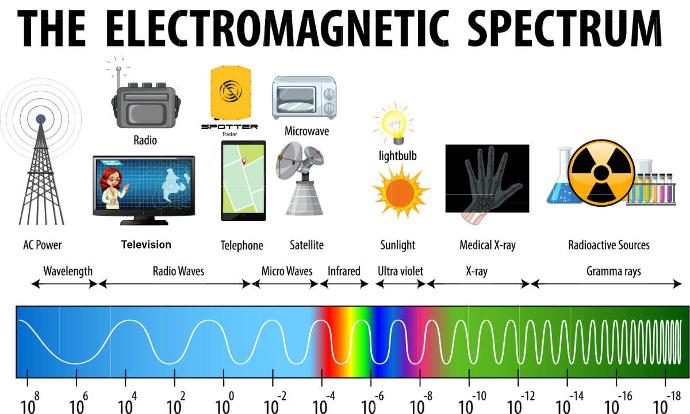Here at Spotter, we’re fans of technology. We’re fans of the power grid and the many technologies it makes us capable of using. And we especially enjoy pushing the boundaries of radar technology—largely so that we can defend your access to modern power, the ability to keep your food cold, surf the internet, drive safe with traffic lights, and other technological amenities.
However, we recognize that not all technology is safe. Some technologies, if designed without regard for safety standards, poorly designed, poorly crafted, or poorly maintained can pose a potential health risk to their users and others in close proximity.
It is the responsibility of all technology manufacturers to consider and abide by certain safety parameters and communicate clearly about their product’s safety so that customers can make the best decisions for their health.
Spotter Radars conform to the very highest safety standards to ensure they present absolutely no health or safety risk to those installing them, using them, or living/working in proximity to them.
In this review, we will discuss the various features of Spotter radars and their compliance with safety standards, including their power usage, electromagnetic frequency levels, FCC compliance, self-monitoring, durability design, and shutdown safeguards.
Transmission Signal Strength
One of the greatest modern concerns for technology safety is the strength of the electromagnetic signals coming from a device. This is understandably a concern for devices such as radars that must constantly transmit and receive electromagnetic radio signals in order to perform their surveillance function.
Compared to other common technologies, Spotter Radars transmit radio signals at a very low wattage to avoid any potential damage from signal polarization.
Product | Wifi Router | Spotter Radar | Bluetooth device | Wireless Microphone | Cell Phone |
RF Power Transmission | 10-25 milliwatts | 100 milliwatts | 100 milliwatts | 250 milliwatts | 0.6-3 Watts |
Electromagnetic Frequency Levels & FCC Compliance
Modern communications including radio, internet, and satellite communications depend on the transmission and reception of electromagnetic frequencies. However, to remain safe, technologies that transmit polarized electromagnetic frequencies must stay with certain ranges or frequency “bandwidths”.
The role of the Federal Communications Commission (FCC) is to ensure fair market access and safety in all electromagnetic transmissions. Through extensive research, the FCC has determined which frequencies are safe for extended public use, which are safe for limited use, and which frequencies must be carefully contained to prevent health hazards.
Health-hazardous or “ionizing” electromagnetic frequencies belong to the higher end of the electromagnetic spectrum, are difficult to produce, and are carefully monitored by the FCC and CDC. Products in this category would include Medical exams that use X-rays, CT or CAT (computed tomography) scans, PET (positron emission tomography) scans, Fluoroscopy, and nuclear medicine procedures.
All Spotter radar models use low-bandwidth radio frequencies and are certified by the FCC as safe for use in public spaces.

Image courtesy of vecteezy.com
Self-monitoring
Though most technologies are carefully designed and manufactured to perform their intended functions over long periods of time, the failure of a security device may present a safety hazard. As such, it is best for most technologies, especially those in the security industry and those that perform critical functions, to offer self-monitoring features that can warn users of malfunction at the earliest opportunity.
Knowing when a failure has occurred in your security system will enable a quick reaction to resolve the problem and prevent gaps in your situational awareness. Spotter radars are equipped with self-monitoring capabilities that can detect and report malfunctions within seconds. If a Spotter Radar ceases to transmit as designed, a prominent “Transmit Not Locked” signal will appear on the user’s NIO interface.
Spotter Global also provides prompt and robust field service engineer (FSC) support to clients dealing with any technological issues or who are in need of additional training on Spotter software.
Durability Design
Durable design is a safety factor in every piece of technology. Even low-powered and safety-standard approved technologies can become hazardous if, due to poor maintenance, faulty parts, or severe wear and tear, sensitive internal components become exposed to weather and environmental conditions or even physical human contact outside of manufacturer’s intentions.
Technologies expected to be used in harsh environments are often ruggedized to withstand erosive forces, excessive pressure, extreme temperatures, and more. All Spotter Radar models, deployed all over the world and often to maritime or military environments, are made to withstand extreme temperatures and meet the IP67 standard for water permeability.
On the rare occasion of broken casing and/or power flow malfunction, Spotter radars include resettable fuses and automatic shutdown protocols to protect hardware and personnel from any unexpected current surges that come from the radar’s connected power source.
Conclusion
Spotter Radars are designed to prevent harm to people and critical infrastructure through the latest in both radar hardware technology and security integration software. Our mission to prevent harm would not be complete without observing the highest safety standards in our radar systems.
Each and every Spotter Global radar model is designed to be durable and function safely in any environment. All Spotter radars transmit radio frequencies at a very low power level, restrict their transmissions to FFC-approved frequency levels, and self-monitor for transmitting malfunctions.
The robust perimeter security advantages offered by Spotter radars, combined with our strict safety standards and dedication to customer satisfaction, have together made Spotter Global the most trusted radar company in the world. We look forward to many years of continuing to prevent harm with advanced, safe, and reliable radar technology.